Artificial Intelligence and Machine Learning are like two fellow travelers on the quest for intelligent behavior in machines! Machine learning (ML) and Artificial Intelligence (AI) are two of the most exciting new technologies of the 21st century, both of which can deliver a huge range of benefits to businesses and end-users. The two are interrelated but distinct fields that aim at replicating certain aspects of human intelligence into machines. ML and AI may share some conceptual overlap, but they are very different in their approaches and applications. The terms Artificial Intelligence and Machine Learning crop up very frequently while discussing topics like analytics, Big Data, and the broader waves of technological change that are sweeping through the world.
In brief, Artificial Intelligence attempts to engineer machines that can be programmed to solve specific problems using logic-based algorithms. Machine Learning, on the other hand, is an application of AI that attempts to design machines that can learn to solve problems without being explicitly programmed to do so.
Before considering the difference between Machine Learning and Artificial Intelligence, let’s understand what they are.
Artificial Intelligence
Artificial Intelligence (AI) is software which functions in a manner comparable to human intelligence. AI is a technology that enables a machine to exhibit intelligent behavior that mimics humans. This behavior includes learning, planning, and self-correction. The term first came into use in 1956 when John McCarthy organized a conference at Dartmouth University to discuss the potential of computers.
Usually, the term Artificial Intelligence is used to refer to software that is designed to comprehend information, learn from experience, solve complex problems, make decisions and act in ways that would require intelligence if done by a human. Also, AI can be described as the science of making computers do things that require human-like intelligence.
Machine Learning
Machine Learning is a powerful tool in the modern data scientist’s belt. It is a subfield of artificial intelligence, which has been around for decades. But it is only recently that the technology has become advanced enough for machine learning algorithms to be useful in the real world. ML enables machines to learn from past data or experiences without being explicitly programmed. The computer is given some data, which it uses to derive a resulting algorithm, which can then be used to predict the future. For instance, if you have a stock market that changes over time, machines can be used to determine what factors determine whether a particular stock rises or falls in the market. They can then look at historical data and predict whether the stock will rise or fall in the future.
Machine learning vs. Artificial Intelligence
In today’s technological world, we have the ability to process and create large amounts of data. Automated machines along with AI programs are able to read and interpret data like never before. The ability to process large amounts of data leads to the question of how this is accomplished. Is it all done by machines or is it a combination of machines and humans? What makes a machine learn? Artificial Intelligence (AI) and Machine Learning (ML) are two very similar terms that are often used interchangeably. However, a better way to understand the differences between the two is by understanding what they do and how they do it.
Machine learning vs. Artificial Intelligence
Artificial Intelligence is the ability to obtain and apply knowledge. Machine Learning is the acquisition of skill or knowledge. The aim of AI is to increase the possibility of success and not accuracy. It simulates natural intelligence to resolve complex problems. The aim of ML is to increase accuracy, but it doesn’t bother about the success. It learns from data acquired from certain tasks to maximize performance.
Artificial Intelligence works like a computer program that executes smart work, and Machine Learning is a conceptual machine that takes data and learns from it. AI leads to develop software that mimics humans to respond to behave in certain circumstances. It involves formulating self-learning algorithms that formulate wisdom or intelligence. Also, AI goes for finding the optimal solution. On the other hand, ML goes for a solution without determining if it is optimal or not, but it leads to knowledge.
Conclusion
Understanding AI can demonstrate the critical role of ML. Artificial Intelligence (AI) is a joint venture of various intelligent applications. Machine Learning gains insights to learn. Altogether, all these constitute to deliver an advanced machine process.





